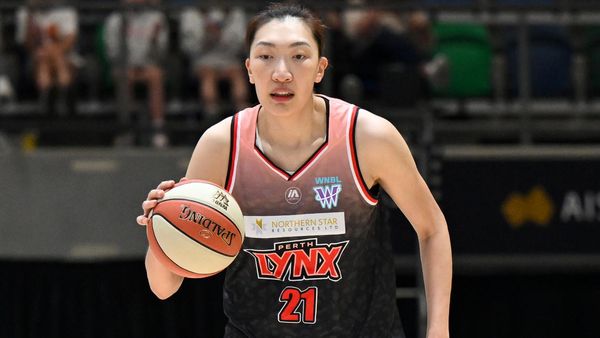LOS ANGELES — When Drake London broke his ankle in October, ending his season after only eight games, the impact on USC's offense was basically catastrophic. London was the centerpiece of the Trojans passing attack, a physically dominant wideout capable of conjuring offense out of double and triple teams.
No receiver in college football carried more on their shoulders. At the time of his injury, London was on pace for 132 catches, a school record, and the runaway favorite for the Biletnikoff Award, given to the nation's most outstanding receiver. But the injury ended that discussion — and USC's season — opening the door instead for an equally prolific wideout on the other side of the country to claim the title of top receiver in college football.
Now that receiver, Jordan Addison, is on his way to USC, where he'll follow in the footsteps of London as the undisputed top target in the Trojans passing attack. The prospect of such a move may have seemed ludicrous only a few years ago. But here was one of the best players in college football bending the transfer market to his favor, sending a signal to the rest of the sport that any player could leave at any time, if he so pleased.
That notion didn't sit well with many in the sport. His transfer to USC struck a nerve, inspiring wild, unsubstantiated rumors, tampering accusations and multiple angry phone calls from Pitt coach Pat Narduzzi to new USC coach Lincoln Riley.
The implications of Addison's decision are certainly wide reaching. There's no denying that. But what exactly does it mean for USC? For Addison? For the future of college football as we know it?
A few takeaways …
Jordan Addison is not Drake London. And that's OK
Let's start with the obvious: London was a 6-foot-4, 220-pound, imposing jump-ball machine with the physicality of an NBA small forward and a ridiculous catch radius to boot. Addison is four inches shorter, nearly 50 pounds lighter and a near-unstoppable deep threat who might dust London in a foot race.
By virtue of those different skill sets, their roles are bound to look quite different in USC's offense. Where London spent most of his time lined up outside for USC last season, Addison did the vast majority of his damage for Pitt — 68% of snaps — from the slot, according to Pro Football Focus.
Both caught passes all over the field, as USC and Pitt's offenses made concerted efforts to manufacture touches and get the ball in their best player's hands.
But while Addison staked his claim as one of the nation's most dangerous deep threats, scoring 10 touchdowns of 20-plus yards, London was deployed far more often inside of 10 yards. Sixty-five percent of London's receptions last season came either inside of 10 yards or behind the line of scrimmage.
Addison may not be the same imposing physical presence as London, but he's no slouch when it comes to catching passes in traffic. He had 15 contested catches last season, according to Pro Football Focus, just two fewer than London, who led the nation despite playing just eight games.
It's not clear yet how USC plans to deploy its new top receiver. But it's safe to assume that strategy will look a bit different than last season.
USC's receiver room is awfully crowded
We thought USC was done after adding three new transfer wideouts. Instead, Riley went and added the top receiver in the transfer portal to the mix.
There's no mistaking where Addison stands in that pecking order now. He's the most dangerous weapon on USC's offense, with a 100-catch season already under his belt, and Riley will use him accordingly. He already has a relationship with quarterback Caleb Williams and should have no issue taking the reins as the Trojans top receiver.
But after Addison, the depth chart gets a lot more muddled. If he starts in the slot, it could mean less time for others such as Terrell Bynum or Gary Bryant Jr. in the rotation.
The only receiver seemingly assured of a spot alongside Addison is Mario Williams, who played with Williams at Oklahoma last season and caught two touchdown passes during the spring game. Beyond that, Bynum, Bryant, Brenden Rice, Tahj Washington and Kyron Ware-Hudson, among several others, will be competing for catches at a position that looks sure to be the most competitive in preseason camp.
College football's new normal has been hard for some
First, there were tampering accusations. Then, rumors of multi-million-dollar name, image and likeness deals. But the real takeaway from the controversy surrounding Addison's transfer is that few around college football were ready for the new free-market realities that were bound to sweep through the sport sooner than later.
Pitt officials have provided no evidence of tampering, but the accusations have been enough to stir the college football masses into a cold sweat. In the meantime, rumors have swirled on social media about massive NIL deals brokered by USC boosters in an effort to lure Addison away from Pittsburgh.
But again, there's no evidence to substantiate such claims. Unlike other major football programs across the SEC, USC does not have an organized collective of donors brokering NIL deals for prospective players. A person familiar with USC's pursuit of Addison told The Los Angeles Times that football was the driving force behind his decision. His previous relationship with Williams, who also hails from the Washington D.C. area, certainly didn't hurt, either.







